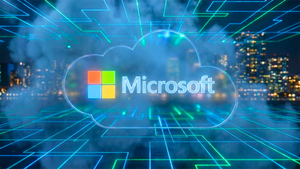Ansible Lightspeed infuses domain-specific AI from IBM Watson Code Assistant to make Ansible more accessible organization-wide, helping to close automation skills gaps
Red Hat, Inc., the world's leading provider of open source solutions, today announced Ansible Lightspeed with IBM Watson Code Assistant, a new generative AI service for Ansible automation. The service is designed to help drive consistent and accurate automation adoption across an organization, making it easier for novice users to automate tasks while removing the burden of low-level task creation from experienced automators.
In a time of evolving industry dynamics and economic uncertainty, businesses are tasked to do more with less. Organizations need a range of talent to stay resilient, drive innovation and realize the full value of hybrid cloud and automation investments, but shortages in critical IT skills can threaten these desired end-states. Per IDC, “90% of global organizations will experience the IT skills crisis by 2025,”1 which means that “by 2026, enterprises that did not effectively address the talent and digital skills gap in their organization will constrain revenue growth opportunities by 20%.”2 But, “driven by skills shortages, CIOs that invest in digital adoption platforms and automated learning technologies will see a 40% increase in productivity by 2025, delivering greater speed to expertise.”3
Ansible Lightspeed represents the next phase of the Project Wisdom initiative, making it accessible to users, contributors, customers, and Red Hat’s ecosystem of partners. Using natural language processing, the service will integrate with Watson Code Assistant, expected to be generally available later this year, to access IBM foundation models and quickly build automation code. This is the value that Watson Code Assistant (in technical preview) aims to bring to enterprises: to address the skills gap and efficiencies needed to accelerate the time to value for automation.
Designed with developers and operators in mind, Ansible Lightspeed enables a significant productivity boost for Ansible users to input a straightforward English prompt while making it easier for users to translate their domain expertise into YAML code for creating or editing Ansible Playbooks. To help train the model, users can also provide feedback.
Domain-specific AI combines the power of first-hand experience with technical innovation and enables AI to be infused into domain-specific technologies, like automation, to meet their specific challenges. Because it’s trained by users with a core understanding of real-world applications, Ansible Lightspeed enables more consistent, higher quality recommendations for specific challenges right away. It can deliver real value quickly — in a user’s industry, language and function.
Red Hat and IBM intend to deliver an Ansible Lightspeed experience built on transparency, collaboration, and choice. Proper code source matching is a key priority, and upstream content contributors will have a choice as to whether or not their work contributes to finetuning of the model.
Availability
The technology preview of Ansible Lightspeed with IBM Watson Code Assistant is slated for availability later this year.
Supporting Quotes
Ashesh Badani, senior vice president and Chief Product Officer, Red Hat
“Innovation has been and always will be a human-centric story. It starts with the right idea, flourishes with the right team and reaches its full potential with the right tools. That’s what we’re doing with Ansible Lightspeed: giving people a capable technology that's intelligent yet understandable enough for developers and operators to use automation in new ways and for users to employ their existing knowledge so that a vision can come to life. This brings AI to life in your own domain. And most importantly, it’s immediately capable, because your own experiences trained it.”
Kareem Yusuf Ph.D., senior vice president, Product Management and Growth, IBM Software
“The rapid pace at which many organizations are adopting AI requires solutions that will empower cloud developers and operations teams with the confidence and flexibility to scale and accelerate AI across their IT organization. IBM Watson Code Assistant, built on watsonx, will leverage carefully curated data in the Red Hat Ansible domain to help developers and operations teams across all skill levels write syntactically correct code with AI-generated recommendations.”
Amy Loomis, research director, Future of Work, IDC
“As organizations continue to define and refine work models best suited for their industries, they inevitably will need to calibrate the right deployment of automation, digital and physical workspace, and place technologies. Far from being a means to an end, deployment of these technologies is sparking new leadership conversations around empowering workers to be more autonomous and innovative working with IT, across functions and with clients.”1
Red Hat Summit
To watch the Red Hat Summit keynotes virtually, tune in at the following times. The livestream will be available on Red Hat's Twitter, LinkedIn, and YouTube accounts. Choose your viewing preference and hear the latest from Red Hat executives, customers, and partners.
- May 23 at 9 a.m. ET Innovation doesn’t rely on your IT budget (LinkedIn | YouTube)
- May 23 at 1 p.m. ET The automation moment — and beyond (LinkedIn | YouTube)
- May 24 at 9 a.m. ET Optimize to innovate at scale (LinkedIn | YouTube)
Catch up on select event highlights and explore a collection of additional new online sessions for free on the Red Hat Summit virtual content hub.
Additional Resources
- Learn how IBM Watson Code Assistant is reshaping IT automation
- Get started with Red Hat Ansible Automation Platform
- Explore Red Hat’s IT automation and management solutions
- Accelerate IT automation with Event-Driven Ansible
- Learn more about Red Hat Summit
- Visit the Red Hat Summit 2023 newsroom
- For event-specific updates, follow @RedHatSummit or #RHSummit on Twitter
- For the latest news and announcements, follow Red Hat on Twitter and LinkedIn
Connect with Red Hat
- Learn more about Red Hat
- Get more news in the Red Hat newsroom
- Read the Red Hat blog
- Follow Red Hat on Twitter
- Follow Red Hat on Instagram
- Watch Red Hat videos on YouTube
- Follow Red Hat on LinkedIn
About Red Hat, Inc.
Red Hat is the world’s leading provider of enterprise open source software solutions, using a community-powered approach to deliver reliable and high-performing Linux, hybrid cloud, container, and Kubernetes technologies. Red Hat helps customers integrate new and existing IT applications, develop cloud-native applications, standardize on our industry-leading operating system, and automate, secure, and manage complex environments. Award-winning support, training, and consulting services make Red Hat a trusted adviser to the Fortune 500. As a strategic partner to cloud providers, system integrators, application vendors, customers, and open source communities, Red Hat can help organizations prepare for the digital future.
Forward-Looking Statements
Except for the historical information and discussions contained herein, statements contained in this press release may constitute forward-looking statements within the meaning of the Private Securities Litigation Reform Act of 1995. Forward-looking statements are based on the company’s current assumptions regarding future business and financial performance. These statements involve a number of risks, uncertainties and other factors that could cause actual results to differ materially. Any forward-looking statement in this press release speaks only as of the date on which it is made. Except as required by law, the company assumes no obligation to update or revise any forward-looking statements.
Red Hat, Red Hat Enterprise Linux, the Red Hat logo and Ansible are trademarks or registered trademarks of Red Hat, Inc. or its subsidiaries in the U.S. and other countries. Linux® is the registered trademark of Linus Torvalds in the U.S. and other countries.
1IDC FutureScape: Worldwide Future of Work 2022 Predictions, Doc # US47290521, Oct 2021
2IDC FutureScape: Worldwide Digital Business Strategies 2023 Predictions, Doc # CA49743822, Oct 2022
3IDC FutureScape: Worldwide Future of Work 2023 Predictions, Doc # US48711022, Oct 2022
View source version on businesswire.com: https://www.businesswire.com/news/home/20230523005091/en/
Contacts
Jen Frunza
Red Hat, Inc.
jfrunza@redhat.com




